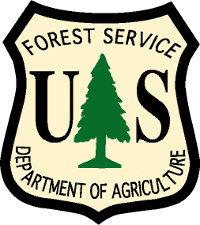Sonora, CA…Jeanne Higgins, Stanislaus National Forest Supervisor, signed the Decision Memo (DM) for the Wrights Creek Plantations Healthy Forest Restoration (Wrights Creek HFR) project on the Mi-Wok Ranger District, Stanislaus National Forest (STF) on August 9, 2016, and the first timber sale opportunity Thommy Wright Timber Sale:began advertisement on August 24, 2016 The Wrights Creek HFR project is the first project planned by the Stanislaus National Forest under the new Insect and Disease Infestation categorical exclusion authority granted in the Agriculture Act of 2014 (2014 Farm Bill). This project is unique because we are taking a proactive approach at attempting to address the unprecedented tree mortality affecting the forests of the Sierra Nevada Mountains. Insect infestations and outbreaks tend to occur and thrive in stands with little heterogeneity during favorable environmental conditions (i.e. drought). When these conditions occur simultaneously, the probability for insects to encounter a suitable host (i.e. one in which resistance mechanisms (resin) can be overcome) increases greatly. Mortality due to drought and insect and disease has already begun within, and in the vicinity of, the project area.
The plantations we will treat, have high stand densities and lack structural and species diversity. These characteristics coupled with a 4th consecutive year in drought status, put the plantations at a particularly high risk of not only insect infestation and disease, but also stand-replacing wildfire. Vegetation and trees will be removed to promote landscape heterogeneity and reduce competition, which allows more moisture for the remaining healthy trees to repel insect infestations. Mortality due to drought and insect and disease has already begun within, and in the vicinity of, the project area. Insect infestations and outbreaks tend to occur and thrive in stands with little heterogeneity during favorable environmental conditions (i.e. drought). When these conditions occur simultaneously, the probability for insects to encounter a suitable host (i.e. one in which resistance mechanisms (resin) can be overcome) increases greatly.
Success of this project in reducing the threat of, or increasing the resilience to, insect and disease infestations will be dependent on timely implementation. Since this project meets the qualifications to be categorically excluded from documentation in an Environmental Assessment (EA) or Environmental Impact Statement (EIS) and no extraordinary circumstances exist to preclude the use of the Insect and Disease Infestation category, implementation of this project may begin immediately.
Documents, maps and other information are available by request from the Stanislaus National Forest, 19777 Greenley Road, Sonora, CA 95370; or, online at: http://www.fs.usda.gov/project/?project=48931.
For more information about this project contact Kathryn Wilkinson at 209-288-6321. For further information contact the Stanislaus National Forest Supervisor Office at: 209-532-3671 or Mi-Wok RD 209-586-3234.
The mission of the U.S. Forest Service, part U.S. Department of Agriculture, is to sustain the health, diversity and productivity of the nation’s forests and grasslands to meet the needs of present and future generations. The agency manages 193 million acres of public land, provides assistance to state and private landowners, and maintains the largest forestry research organization in the world. Public lands the Forest Service manages contribute more than $13 billion to the economy each year through visitor spending alone. Those same lands provide 20 percent of the nation’s clean water supply, a value estimated at $7.2 billion per year. The agency has either a direct or indirect role in stewardship of about 80 percent of the 850 million forested acres within the U.S., of which 100 million acres are urban forests where most Americans live.
###
USDA is an equal opportunity provider and employer.



